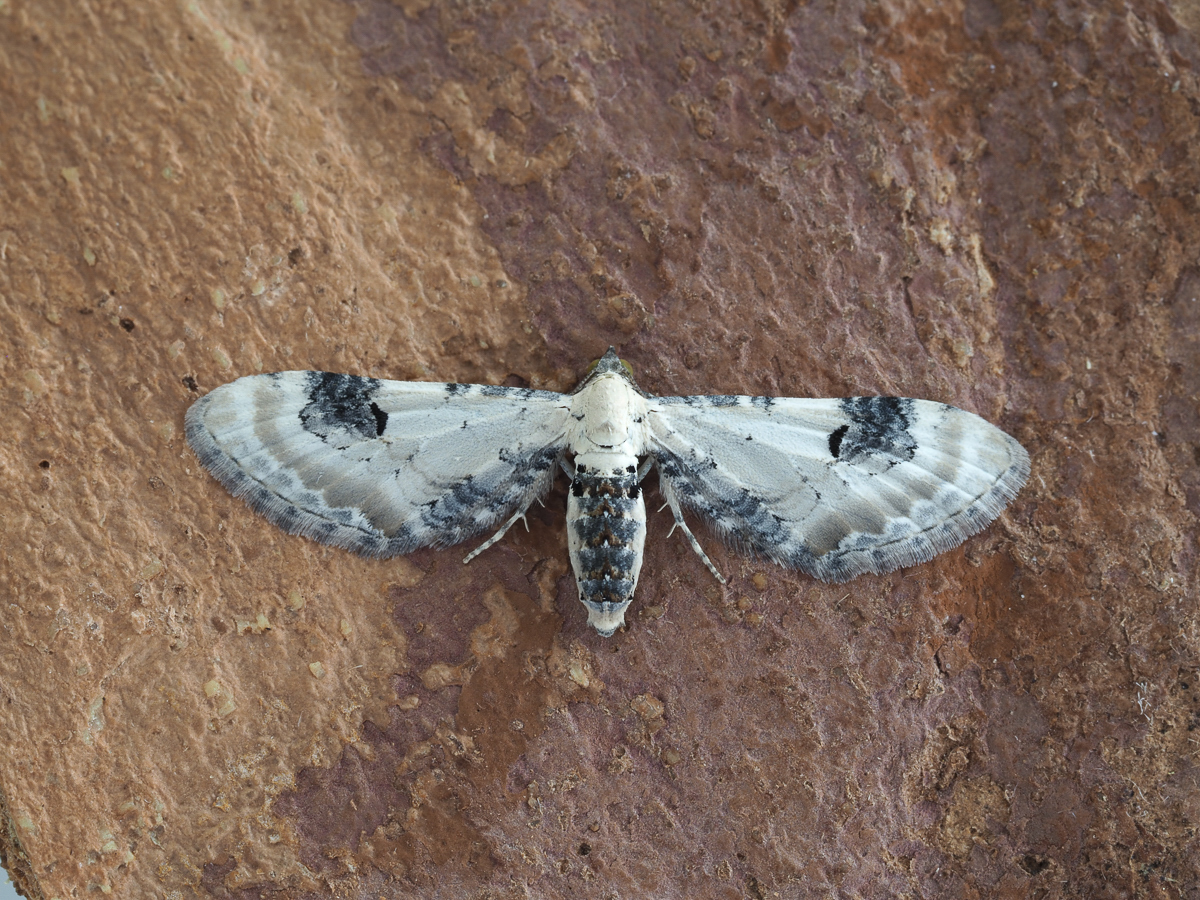
Photo © Andy Mitchell
The lime-speck pug (Eupithecia centaureata) is a moth of the family Geometridae. It is a common species throughout the Palearctic region (where it is found in Europe, Central Asia, Mongolia, southern Siberia, eastern China (Guangdong) and Taiwan), the Near East and North Africa.
This is a distinctive species, all the wings being largely white except for a black blotch on the costa of the forewing. The wingspan is 20–24 mm. In the ab. obscura Dietze.(perhaps developed chiefly in Asia but also recorded from the Tyrol) the ground-colour of both wings has a smoky suffusion. In the ab. centralisata Stgr., chiefly from Palestine and Central Asia, the markings are weaker, sometimes (except the discal mark) almost entirely obsolete. The larva is long and thin, white-yellow with a red dorsal stripe and horseshoe-shaped red spots running down the sides.
Often two broods are produced each year and the adults can be seen at any time during the summer and autumn. The moths fly at night and are attracted to light and nectar-rich flowers.
The larva is rather variable but is usually green or yellow, often with red markings. It feeds on the flowers of a variety of plants (see list below). The species overwinters as a pupa.
Source: Wikipedia
The primary larval foodplants are burnet-saxifrages (Pimpinella spp.), Canadian Goldenrod (Solidago canadensis), Clustered Bellflower (Campanula glomerata), Common Fleabane (Pulicaria dysenterica), Common Ragwort (Jacobaea vulgaris), Field Scabious (Knautia arvensis), Goldenrod (Solidago virgaurea), Greater Plantain (Plantago major), Groundsel (Senecio vulgaris), hawkbits (Leontodon spp.), hawkweeds (Hieracium spp.), Hemp-agrimony (Eupatorium cannabinum), knapweeds (Centaurea spp.), Mugwort (Artemisia vulgaris), Rock Sea-lavender (Limonium binervosum), Sea Wormwood (Artemisia maritima), Traveller's-joy (Clematis vitalba), Wild Angelica (Angelica sylvestris) and Wild Carrot (Daucus carota ssp. carota).